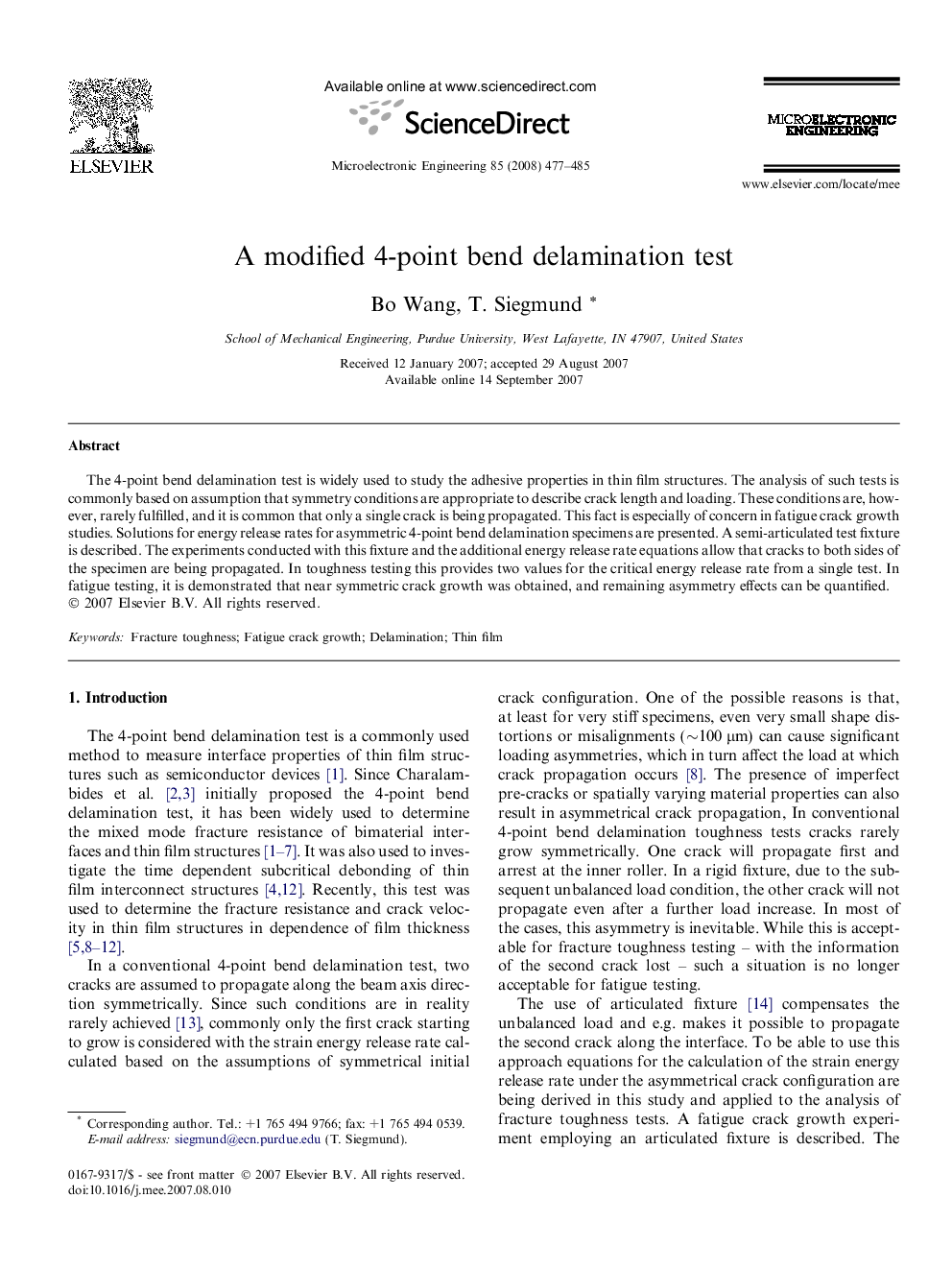| Article ID | Journal | Published Year | Pages | File Type |
|---|---|---|---|---|
| 543872 | Microelectronic Engineering | 2008 | 9 Pages |
The 4-point bend delamination test is widely used to study the adhesive properties in thin film structures. The analysis of such tests is commonly based on assumption that symmetry conditions are appropriate to describe crack length and loading. These conditions are, however, rarely fulfilled, and it is common that only a single crack is being propagated. This fact is especially of concern in fatigue crack growth studies. Solutions for energy release rates for asymmetric 4-point bend delamination specimens are presented. A semi-articulated test fixture is described. The experiments conducted with this fixture and the additional energy release rate equations allow that cracks to both sides of the specimen are being propagated. In toughness testing this provides two values for the critical energy release rate from a single test. In fatigue testing, it is demonstrated that near symmetric crack growth was obtained, and remaining asymmetry effects can be quantified.
